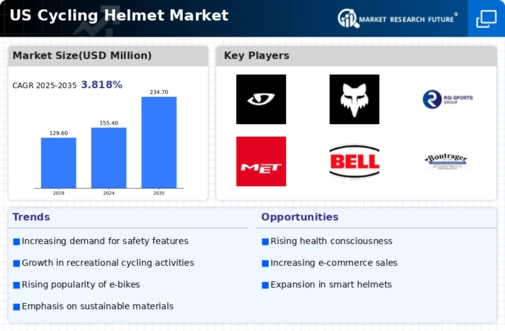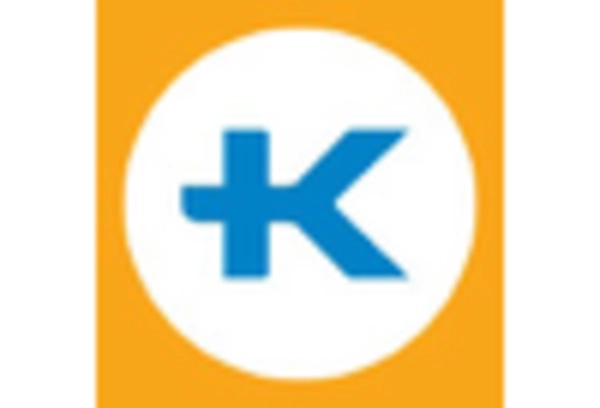Rise in Urban Cycling Initiatives
The rise in urban cycling initiatives is contributing to the expansion of the cycling helmet market. Many cities across the US are investing in cycling infrastructure, such as dedicated bike lanes and bike-sharing programs, which encourage more individuals to take up cycling as a mode of transportation. This shift towards cycling-friendly urban environments is likely to increase the number of cyclists on the road, thereby boosting the demand for helmets. Reports indicate that cities with robust cycling initiatives have seen a 25% increase in cycling participation. As urban areas continue to promote cycling as a sustainable transportation option, the cycling helmet market is expected to thrive, with more individuals recognizing the importance of wearing helmets for safety.
Legislative Support for Helmet Use
Legislative measures promoting helmet use are significantly influencing the cycling helmet market. Various states in the US have enacted laws mandating helmet use for specific age groups, which has resulted in a marked increase in helmet sales. For instance, states with strict helmet laws report a 30% higher usage rate among cyclists compared to those without such regulations. This legal framework not only encourages safer cycling practices but also fosters a culture of compliance among riders. As more states consider implementing similar laws, the cycling helmet market is likely to experience sustained growth. The interplay between legislation and consumer behavior suggests that regulatory support will continue to be a crucial driver, enhancing the visibility and acceptance of helmets among cyclists.
Growing Awareness of Cycling Safety
The increasing awareness of cycling safety among the general public appears to be a primary driver for the cycling helmet market. As more individuals engage in cycling for recreation and commuting, the emphasis on protective gear has intensified. According to recent surveys, approximately 70% of cyclists in the US acknowledge the importance of wearing helmets, which has led to a surge in demand for high-quality helmets. This heightened awareness is likely to propel the cycling helmet market, as consumers prioritize safety features and certifications. Furthermore, educational campaigns by various organizations have contributed to this trend, reinforcing the necessity of helmets in reducing head injuries. The cycling helmet market is thus positioned to benefit from this growing consciousness surrounding safety, potentially leading to increased sales and innovation in helmet design.
Technological Advancements in Helmet Design
Technological advancements in helmet design are reshaping the cycling helmet market. Innovations such as improved materials, enhanced ventilation systems, and integrated safety features are attracting consumers who seek both performance and protection. For example, the introduction of lightweight materials has led to helmets that are not only safer but also more comfortable for extended use. The cycling helmet market is witnessing a trend where manufacturers invest in research and development to create helmets that meet evolving consumer expectations. Additionally, the integration of smart technology, such as crash detection systems, is becoming increasingly popular. This focus on innovation is likely to drive market growth, as consumers are willing to invest in helmets that offer superior safety and functionality.
Increased Participation in Competitive Cycling
The increased participation in competitive cycling events is driving growth in the cycling helmet market. As more individuals engage in cycling competitions, the demand for specialized helmets designed for performance and safety is on the rise. Competitive cyclists often seek helmets that offer aerodynamic advantages and superior protection, leading to a diversification of products within the market. Recent data suggests that participation in cycling races has grown by 15% over the past few years, indicating a robust interest in the sport. This trend is likely to encourage manufacturers to innovate and expand their product lines to cater to the needs of competitive cyclists. Consequently, the cycling helmet market is poised for growth as it adapts to the evolving landscape of competitive cycling.

















Leave a Comment